 By Pepper Parr By Pepper Parr
BURLINGTON, ON. March 6, 2013 We are being asked to think hard about the kind of city we are and determine who the real leaders are. The Clergy use the word ‘discern’ when they want to think deeply and make decisions that are not the simple everyday decisions we made.
The Burlington Community Foundation (BCF) is seeking nominations from Burlington residents for the 2012 Philanthropist of the Year. This is your opportunity to nominate a philanthropist who merits community-wide recognition for their contribution.
A philanthropist is a person who gives voluntarily to promote the common good. This person, or family, may give financial resources, time, expertise and/or products, and has likely given over a long period of time. This award offers the community the chance to publicly honour and thank a noted philanthropist for their contribution both to Burlington and the wider community.
Most people probably see philanthropists as people with a lot of money who write big cheques The people the BCF are looking for are those who can write a cheque but more importantly can also show up for a meeting, spend the time needed to make something happen.
Is Burlington a city where many of the men and women in their late 40’s early 50’s could be seen as philanthropists? Are we going to define ourselves as a city that understands what money can do but knows that hard work is what makes things happen. Money alone will never make the difference.
The 2012 Philanthropist of the year will be the fourth that Burlington has chosen to recognize. The first three, Don Smith, Kevin Brady and Doug Leggat were certainly well-known, successful business people but more importantly they were known for the work they had done. And for the personal experiences that shaped their lives.
 Don Smith, 2009 Philanthropist of the Year Were you to watch the video done on Don Smith you would see how hugely he was impacted by young boys in Sierra Leone who just wanted a soccer ball and the chance to play the game. Don was taken aback by such a simple need; it was a transformative experience for him. But he didn’t stop at that – he made phone calls and got colleagues to buy thousands of soccer balls and probably paid for many of them out of his own pocket.
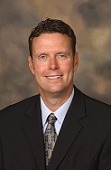 Kevin Brady 2010 Philanthropist of the Year Kevin Brady suffered a serious medical situation that left him with an appreciation for life he did not previously have – and he knew then that he was here to do more than make money. Name the organization that has a need and Kevin Brady will have had his hand in it someway. Sometimes these men write cheques but more often they show up at meetings and provide experience and energy to community problems.
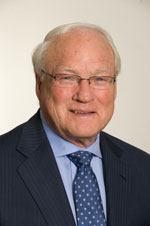 Doug Leggat 2011 Philanthropist of the Year Doug Leggat gets into his car, it is fitting to see the film footage of him driving around town, – to the Nelson Youth Centres to help a needed community facility source the resources it needs. Sure Doug can, and does write a cheque, but more importantly he is attending the meetings, making the phone calls and asking the questions.
Tom Dobbie, a former Burlington city manager who certainly understands the needs of the city serves as the President of the Burlington Community Foundation and will tell you that “it takes awhile to fully understand just where the needs are and then think about how they can be met.
The BCF holds an Annual Masquerade Ball where everyone has a lot of fun and it takes more than chump change to pay for the tickets. The event produces the funds needed to cover the operating costs, the ticket price is $250.
There are two things to take away from this story. Do you know of anyone who serves the community the way Don Smith, Kevin Brady and Doug Leggat have and do you see yourself as a philanthropist? It isn’t just about money – it is about serving. Listen to what past philanthropists have had to say about their experience – you might see philanthropy differently.
Giving, and these men do give, substantially. They give of their time, their energy, their expertise and their experience. All are successful business people, and several have known personal grief and harm. They were down, they had been hurt but they struggled and recovered and know that they are here to serve and they do so day in and day out.
For a city the size of Burlington to have such depth in character; for a city this size with a rural background that can remember when the land around Dundas was orchards and Plains Road was a highway to somewhere and not the main street of a community. They have been a part of the city’s growth, have prospered because of it but have never forgotten who they are and what they were fortunate enough to have given to them. They have made giving back a part of the life they live each day – and ensured that their children grew to follow their lead.
Next October, the community will gather at the Convention Centre to celebrate and formally recognize the 2012 Philanthropist. The event is called the Masquerade Ball and they do it up real fancy and use the event at the prime fund-raiser to cover the $200,000 operating budget for the BCF.
The funds that are raised to be used in the community are never touched for administrative purposes. The BCF currently has $6.5 million in assets under administration. They use the interest from those assets to met the needs of different community organizations. The report setting out who they support is HERE
The nomination forms are HERE.
The deadline for nominations is March 15th: Nominations due at BCF by midnight. Please submit by mail, fax, email, or deliver in person.
Late March/April 2013: Past BCF Philanthropists of the Year and BCF senior staff review nominations and select finalist.
May: BCF announces 2013 Philanthropist of the Year.
 October 26th: Award and honouring of Philanthropist of the Year at BCF Masquerade Ball. October 26th: Award and honouring of Philanthropist of the Year at BCF Masquerade Ball.
If one were to be just a bit critical – positively critical, the same organizations are the beneficiaries of the philanthropic efforts. The YMCA got mentioned by all three men nominated in the past (time for a woman to be nominated folks); everyone was involved in the hospital and the United Way. Those are the core groups – there are literally hundreds of others that serve the community and at times need some help.
Later this year the community will nominate the next person to be recognized and honoured and then added to the list. How many of these philanthropists do we have? More than we imagine. Appreciate those who have been recognized.

 By Staff By Staff
BURLINGTON, ON March 6, 2013 The city has a new fire chief – Tony Bavota will take on the role of chief of the Burlington Fire Department, effective immediately.
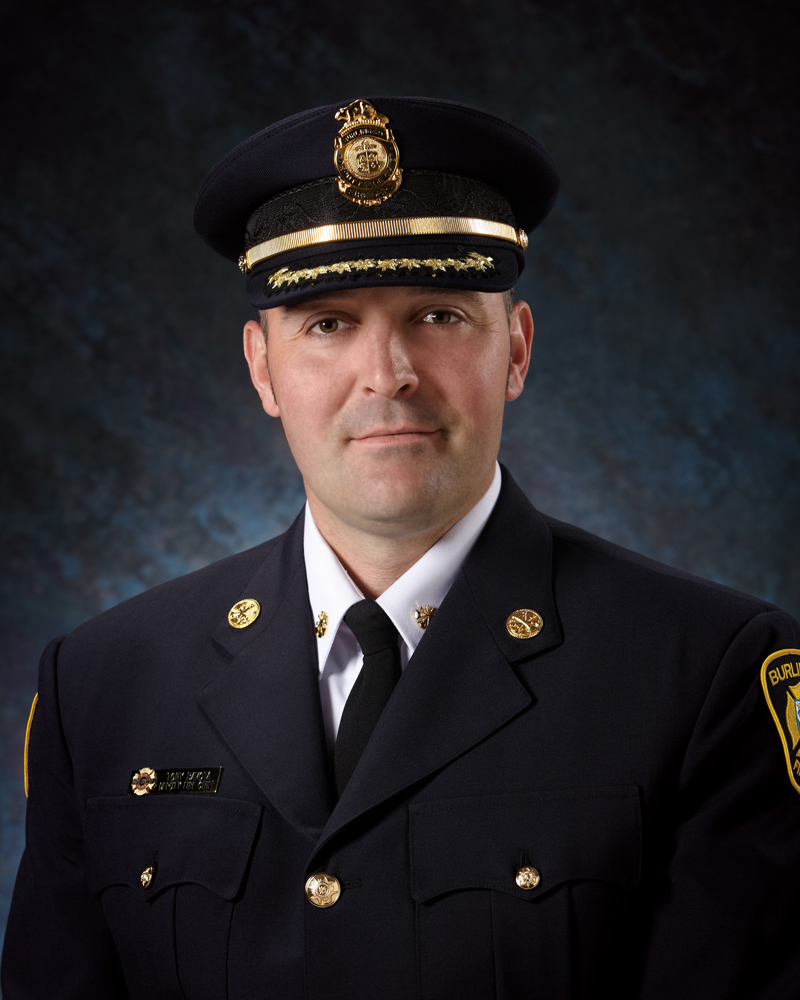 Tony Bavota appointed Chief of the Burlington Fire department. Bavota has been a deputy fire chief with the Fire Department since 2009 and is in his 18th year of employment with the City of Burlington. His progressive responsibilities within the department include acting platoon chief, fire captain, acting captain, firefighter and infrastructure project manager. Bavota also gained extensive corporate experience while working in the city manager’s office on a job rotation as the assistant to the city manager.
Bavota is going to have to rely heavily on his city hall experience to get the fire fighters he feels he needs and to prepare Burlington for a different kind of preparation. In the next five years the city will see a 22 storey structure on Lakeshore Road and, if the way the city manager is talking, we can expect to see more in the way of high-rise structures.
 High rise buildings create different challenges for fire fighters. This multi-storey building on Maple was completed recently and the 22 storey development on Lakeshore Road mean different, expensive equipment and time to train the men who will man it. The Strata on Maple Avenue is an example. These buildings require different kinds of firefighting equipment – and the stuff isn’t cheap. Then firefighters have to be trained in how to use the equipment.
Before joining the Burlington Fire Department, Bavota worked with the Guelph Police Service, as a constable and tactical response unit member.
Bavota earned a Masters of Public Administration from the University of Western Ontario in 2011, and holds a diploma in Public Administration and a Bachelor of Arts-Economics Degree.
Acting Chief Dave Beatty will return to his role as deputy chief. “We thank Acting Chief Beatty for his continued leadership. The fire department management team continues to work effectively together throughout the transition period and I sincerely appreciate their collective efforts,” said Phillips.
The fire department has a combined urban and rural area covering 189 square kilometres that has to be covered. They provide public education, fire prevention, suppression and emergency response in Burlington. The Burlington Fire Department currently has 202 full-time staff and a complement of 65 volunteers serving the community.
The previous fire chief left the Burlington fire department for greener pastures where he didn’t have the ongoing battle with city council for the resources he felt he needed.
Firefighters in Ontario are exceptionally well-organized and aren’t shy about showing their muscle to make their point. In the last provincial election they made it very clear they were supporting the government. They have been known to attend city budget review meetings as a group and to attend at Council meetings sitting as a group in Council chambers. .

 By Pepper Parr By Pepper Parr
BURLINGTON, ON. March 4, 2013 Your tax dollars are hard at work – and you can now avail yourself of a larger Blue Box and there is more “stuff” that you can now put in that Blue Box.
Monday, April 1, 2013 (hold it – that’s April Fool’s day isn’t it – are they pulling a fast one on us?) will mark the start of new changes to Halton Region’s waste collection program, including larger Blue Boxes that will help residents recycle a number of new acceptable Blue Box materials.
The changes are part of the Region’s Solid Waste Management Strategy with a goal of reaching a 65% residential waste diversion rate by 2016.
“Halton Region residents are already among the best in the province when it comes to participating in waste diversion programs like Blue Box recycling,” said Gary Carr, Halton Regional Chair. “Currently, 95 % of single-family homes place a Blue Box out for collection every week.”
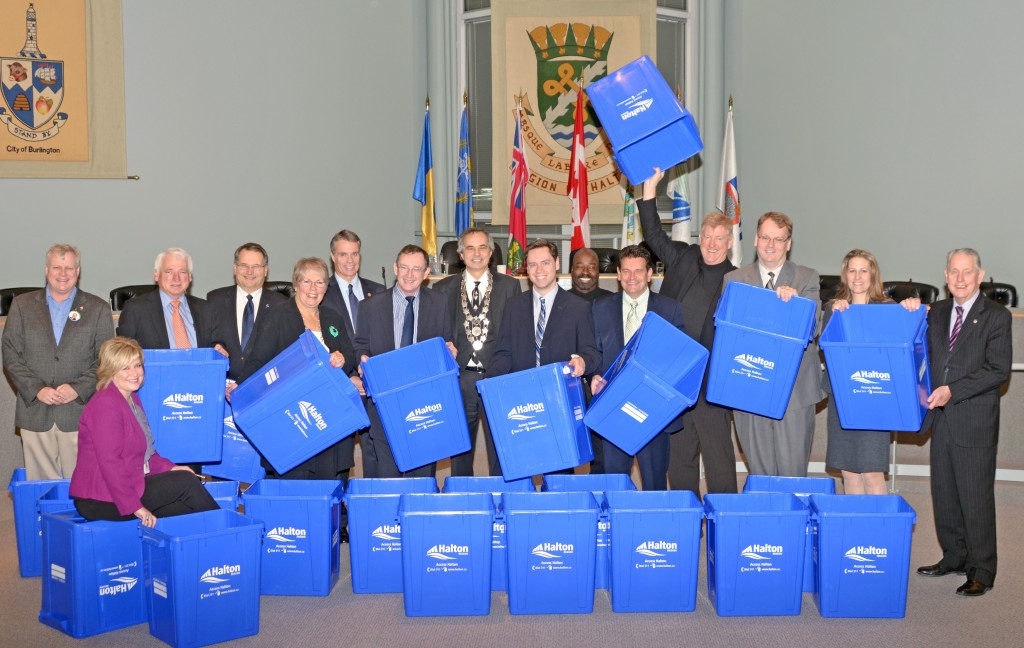 Members of Halton Regional Council show off new larger Blue Boxes available for pick up free of charge starting in March. Effective Monday, April 1, 2013, Halton residents can add more items to their Blue Box, including clear plastic clamshells (e.g. berry and lettuce containers), single-serve yogurt cups, plastic plant pots and trays, empty metal paint cans (lids removed), and cardboard cans (e.g. frozen juice cans/chip cans). A complete list of new acceptable Blue Box items can be found at this web site.
You can use the print feature on this website to print out the list and put it on the fridge.
To help manage these new materials, larger Blue Boxes (22-gallon capacity vs. 16-gallon) will be available to residents for pick up at eight different Blue Box Pick-up Events
Saturday, March 9th: 9-3 pm
Corpus Christi Catholic Secondary
School, 5150 Upper Middle Road, Burlington
Mohawk Racetrack (Parking Lot)
9430 Guelph Line, Campbellville
Saturday, March 16th : 9 a.m. to 3 p.m.
Acton District High School, 21 Cedar Road, Acton
Halton Regional Centre, 1151 Bronte Road, Oakville
Saturday, March 23, 2013, 9 a.m. to 3 p.m.
Burlington Closed Landfill, 291 North Service Road, Burlington
Sheridan College, 1430 Trafalgar Road, Oakville
Saturday, March 30, 2013, 9 a.m. to 3 p.m.
Robert C. Austin Operations Centre,
11620 Trafalgar Road, Georgetown
Milton GO Station, 780 Main Street East, Milton
Starting March 11, 2013
Halton Regional Centre 1151 Bronte Road, Oakville, 8 a.m. – 5 p.m.
Halton Waste Management Site (Scalehouse), 5400 Regional Road 25, Milton, 8 a.m. – 4:30 p.m.
Robert C. Austin Operations Centre 11620 Trafalgar Road, Georgetown, 8:30 a.m. – 4:30 p.m.
Residents can also continue to use their existing Blue Boxes.

 By Staff By Staff
BURLINGTON, ON. March 4, 2013 Here’s a different one for you. A group is putting on an event for a local charity, Breast Cancer Support Services. The city certainly has its share of charity events.
But this one is different with a unique angle.
Kimberly Neale, a young go-getter we met some time back, had created a service for people with more money than time. She called her business “I’m On It” and was available to do things that called for promptness and quick thinking.
We got this media release from her yesterday. What the group she is part of has come up with is a photo session that has a local model posing for 12 different photographers. The concept came from Derrick Van Der Kolk who pulled together a group of photographers who would be given a camera, a roll of colour film, a couple of props and a model to photograph. The photographers would all use the same studio and have one hour to complete their shoot.
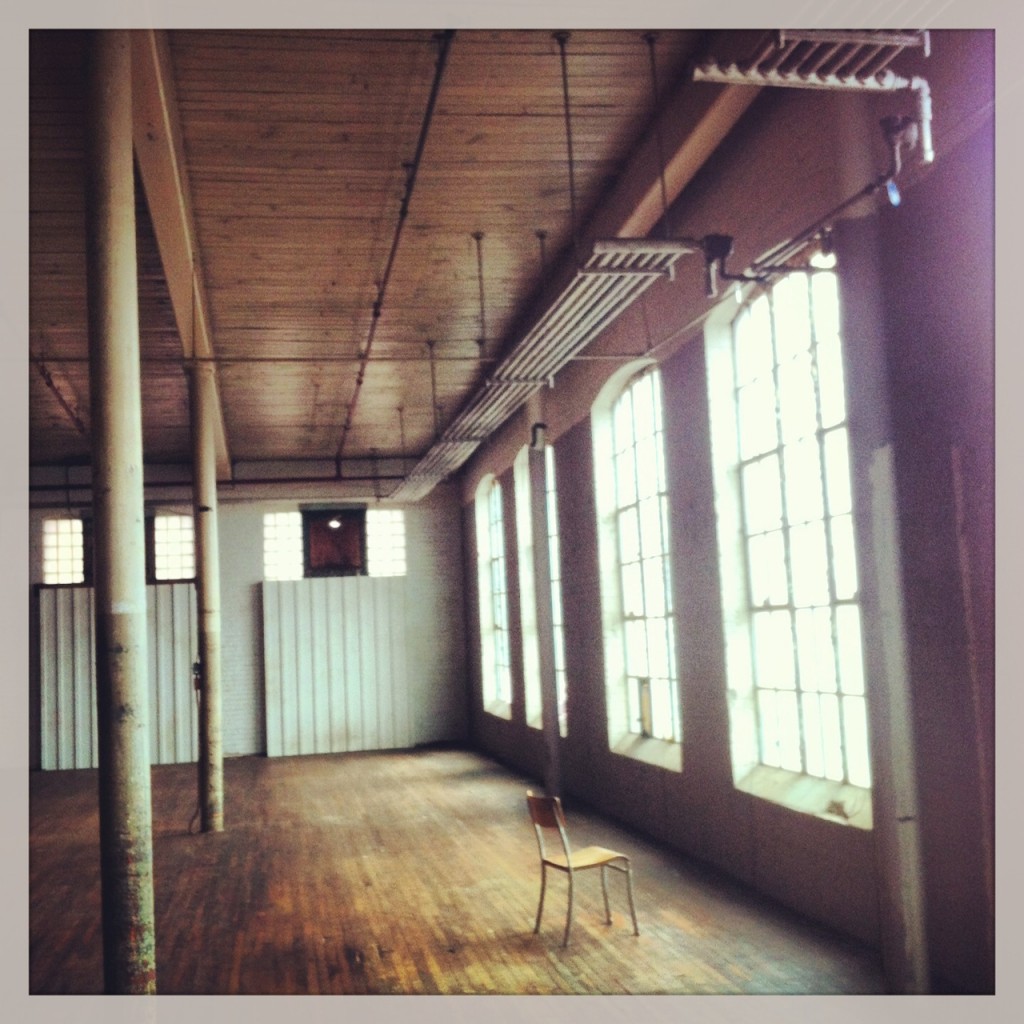 A simple naturally lit setting for the twelve photographers taking part in the ONE event. The setting along with a pink boa, a pink mask and a pink scarf was all each photographer had to work with. They all had to use the Hasselblad camera with Fuji colour film that will be developed and mounted by a professional film processing company. The camera – a Hasselblad – not too shabby – and 120 Fuji Colour film with an ISO of 400 would be used in the warehouse space using the same the same props: a pink boa, a mask and a pink ribbon.
That’s it. There is also a make-up artist, Courtney Nevins available to the photographers.
The studio space they used offered some interesting lighting opportunities. It sounded interesting.
“I hope this email finds you well” said Kimberly Neale in the email she sent us. “I wanted to let you know about a unique charity event taking place at Spencer’s at the Waterfront in Burlington March 28th to help support Breast Cancer Support Services. Now the relevance of the pink scarf became evident.
We gave Kimberly as call and learned more. The 12 photographers were chosen a couple of months ago by Derrick Van Der Kolk .
The photographers were given the film and camera – Fuji Colour film (ISO400) – that’s about all there is in terms of colour film – yes film – not digital. Kodachrome bit the dust about a year ago.
Each photographer’s ONE best shot will be showcased, displayed and will appear anonymous at the Gala event March 28th at Spencer’s on the Waterfront. Each photograph will be framed in the same manner. The film will be processed with no retouching and of course no Photo Shopping – this is real film, the old stuff, the original stuff. The photographers will use 120 film – didn’t know they still made the stuff.
Each print will be blown up to 36 x 36 inches and then framed.
The prints will be judged and then sold at the March 28th event.
ONE will feature the creative talent of 12 photographers and showcase the artistry of film photography while raising funds for an amazing, local charity.
 The showing of the photographs is the culmination of the event. At the final event on March 28, 2013, at Spencer’s, where each photographer’s ONE best shot will be showcased and displayed. Photo Media Décor is doing the framing with World of Lighting putting just the right amount of spotlights on the pictures to show them all at their very best once they are hung. The photographs will not have the names of the photographers on them. Three judges will then declare the winning photo. Traditional film photography will be used and photos will not be altered after the development process. Film processing is being done by Duncan & Wright. At the conclusion of the voting, the winner is announced and a silent auction will be held for each photo with all the money raised going to Breast Cancer Support Services. The showing of the photographs is the culmination of the event. At the final event on March 28, 2013, at Spencer’s, where each photographer’s ONE best shot will be showcased and displayed. Photo Media Décor is doing the framing with World of Lighting putting just the right amount of spotlights on the pictures to show them all at their very best once they are hung. The photographs will not have the names of the photographers on them. Three judges will then declare the winning photo. Traditional film photography will be used and photos will not be altered after the development process. Film processing is being done by Duncan & Wright. At the conclusion of the voting, the winner is announced and a silent auction will be held for each photo with all the money raised going to Breast Cancer Support Services.
This is a ONE of a kind event taking place in a beautiful location, featuring the artistic abilities of talented, local photographers!
Kimberly tells, in a breathless voice that their “Facebook page has reached 78,463 people in just ONE month and we continue to see this number rise.”
Almost too much – but it in an interesting take on modern photography.
The idea came out of three minds that managed to meet. Derrick Van Der Kolk came up with the concept and recruited Neale and Chris Sakai (Sakai Promotions) to assist with organizing, hosting and promoting the event.
ONE was created to bring the true art of true photography back in to the forefront. As a talented and passionate photographer, Derrick wanted to give photographers a platform / competition where the true skills that a group of photographers could be challenged.
The twelve chosen include both professionals and amateurs and one as young as fourteen.
“Van Der Kolk had the idea but he needed help in promoting and getting it to actually happen. He approached us with his idea and how to bring this to life. The three of us saw an incredible opportunity to tie it all together; creative art (showing local talent), local charity and an opportunity to showcase / promote local businesses – community, art and business all in one location”, says Kimberly. The venue, the Discovery room at Spencer’s, is as good as it gets. The Killin’ Time Band playing an acoustic set will be there as well!
Tickets are only $25.00 online / $30.00 at the door and can be purchased on the website or by emailing ONEphotographyandcharityevent@gmail.com

 By Staff By Staff
BURLINGTON, ON. March 2, 2013 Burlington, Ont., March 1, 2013 – The City of Burlington is looking for sponsors and a name for the new recreation facility in Alton, opening this fall. The new facility will support Burlington’s sports community and will be a destination for regional and provincial sports tournaments and events.
A sponsorship package for the naming rights to the facility and the amenities inside is now available to the community and businesses.
 The Library Board now has the funding for the staff to work the new Library – now to buy the books, train the staff and get ready for the Grand Opening. Will there be a “get it all done at once” opening or will there be three different events? What do you think – can those politicians turn down a chance to mug for the media? To assist in the development of the naming and sponsorship program, the city worked with a consultant and conducted a national assessment of municipal naming rights practices. The research indicated that more than 60 per cent of 41 municipalities surveyed were actively involved in seeking naming rights sponsors.
“Like many other cities across Canada, the City of Burlington is looking at sponsorship as a viable way of reducing a potential burden on the tax base by generating new funds to help with the future repair and renewal of facilities,” said Rob Axiak, manager of recreation services.
The concept of sponsorship and naming rights is not new to the city.
“We have several city facilities that carry the names of community sponsors such as the Dofasco Waterjet at the Waterfront, Paletta Mansion and various rooms inside Tansley Woods Community Centre to name a few,” said Axiak.
The new recreation facility in Alton includes 53,886 square feet (5,006 square metres) of space and is connected to a new high school and public library branch. The high school and library will be pursuing naming options separately.
 All it needs now is some landscaping and a name that someone with a ton of money and a hankering to have their name in lights and the place will be ready for the public. This fall is the planned opening date. Background: Located on the north side of Dundas Street, east of Walker’s Line beside Norton Community Park, the Alton facility is equipped with amenities to support basketball, volleyball, badminton and disabled sports tournaments and other sporting events.
The recreation facility boasts four 40-metre-high competitive-size gymnasiums, change rooms, two multi-purpose rooms, a meeting room and an indoor sports square designed for award ceremonies. This unique facility is fully accessible for athletes and spectators with disabilities and is the only facility with eight competition-sized double gyms west of Toronto in the Greater Toronto Area.
The high school, with a classroom capacity for 1,200 students, is equipped with four 38 metre-high, competitive-sized gymnasiums, a 200-seat auditorium, art rooms, an illuminated artificial sports field and an eight-lane running track.
The Burlington Public Library branch will combine with the school board’s library to create a joint, integrated library that serves both students and the community. The library’s design provides for multi-generational use and includes flexible space that will take full advantage of new and emerging information technology.
Now that the Library Board has their funding for staff – can you imagine – there were people thinking that the library didn’t need new money to pay for the seven new people needed for the new facility – maybe it could sponsor a search for a new name and then work with the community to find a sponsor.

 REVISED REVISED
We erroneously reported that the $50,000 cost of the Mayor’s One Dream event was paid for bu Emshih Developments. The event was paid for by 12 organizations of which one was Emshih Developments whp donated $5000. The Molinaro Group, another developer with projects before the city also donated $5000.
Our apologies to the Mayor for the mistake we made.
By Pepper Parr
BURLINGTON, ON February 27, 2013 We are back into Inspire mode with the Mayor announcing there will be a series of speakers during 2013.
This next speaker Dr. Pamela Blais to speak to us about Perverse Cities: Hidden Subsidies, Wonky Policy and Urban Sprawl.
Blais is a city planner and principal of Toronto-based Metropole Consultants. Her professional focus is in creating better cities by integrating planning, economic and environmental thinking in the analysis of urban issues, urban design and the development of innovative policy. She is particularly interested in understanding key forces that drive urban development patterns, and how to shape urban form so as to maximize its ability to effectively meet current and future trends. Her approach to urban development issues aims to be strategic and integrated.
 Will we hear some really good ideas from Pamela Blais at the Mayor’s Inspire event? In the past a number of his council members have been notably absent from these events. In her twenty year career as an urban planning consultant, her work has included reurbanisation strategies and research; long-term regional growth planning; municipal economic development strategies; innovative land use policies for industrial areas; urban regeneration strategies; sustainable urban form, community design and infrastructure; and research on the impact of technology on urban form.
Blais has a Master of Science degree in Planning from the University of Toronto, and a Ph.D. in urban economic geography from the London School of Economics. She is a Registered Professional Planner, and a member of the Canadian Institute of Planners.
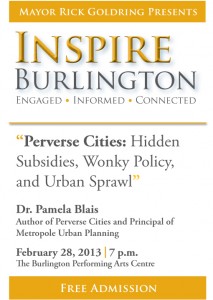 Those are pretty good credentials. Blais will be the eighth speaker in what is a very impressive series – the mayor is to be congratulated on this initiative. By sponsoring these events he has upped the quality of debate and discussion in this city – something that was badly needed. Those are pretty good credentials. Blais will be the eighth speaker in what is a very impressive series – the mayor is to be congratulated on this initiative. By sponsoring these events he has upped the quality of debate and discussion in this city – something that was badly needed.
There is a concern however. When the Mayor Goldring brought in Lance Secretan that encounter resulted in what was at first called a Defining the Dream initiative that then got renamed to: One Dream – which appears to have died – at last we’ve not heard anything since the Mayor announced he would be getting back to the community late in January.
The initiative appears to have died after some $50,000 was spent pulling together some 30 people who weren’t able to get past square one.
All that full day event saw was our MPP, Jane McKenna going after the editor of the Burlington Post for the way she handled news items. Had former Mayor Walter Mulkewich not been in the room and managed to get a grip on the way things were going the meeting might well have melted down.
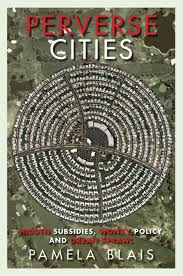 The Mayor put out a bit of a report and said there would be more in January – so far not a word. We now learn that more than $57, 500 was spent on this event – with a portion of that amount coming from two developers ($5,000 each) with major interests in the city. Not a healthy place for any politician to be – especially the mayor, who by the way had not publicly announced where the funding came from. The Mayor put out a bit of a report and said there would be more in January – so far not a word. We now learn that more than $57, 500 was spent on this event – with a portion of that amount coming from two developers ($5,000 each) with major interests in the city. Not a healthy place for any politician to be – especially the mayor, who by the way had not publicly announced where the funding came from.
Hopefully we will hear a solid presentation on some of the follies that get attached to development charges and approaches municipalities take to taxing their residents. Hopefully Blais will inspire the audience and get the Mayor and his council thinking about new approaches to how we manage the growth of a city that is at a crucial point in its growth. Please – no more cock-a-mammy ideas Your Worship.

 By Staff By Staff
BURLINGTON, ON. February 21, 2013 Shortly after 2:30 a.m. on February 18th, 2012, unknown suspect(s) broke into the Mohawk Gardens Public School at 5280 Spruce Ave.
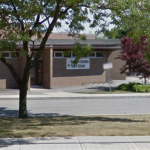 Kindergarten classroom trashed when punks break in. When caught, and they will eventually get caught, a Judge might find a tougher school for them The suspect(s) smashed a window to gain entry to a kindergarten classroom on the northeast side of the school. Once inside, suspect(s) completely ransacked the classroom by overturning desks, chairs and rummaging through the contents of the closets. The ceiling and fluorescent lights were also damaged. The total damage and clean-up was estimated at $1,500.
Might these suspects show up at the next school reunion?
Anyone with information on this or any other crime is asked to contact Crime Stoppers at 1 800 222-TIPS (8477), through the web at www.haltoncrimestoppers.com or by texting “TIP201” with your message to 274637 (crimes).

 By Pepper Parr By Pepper Parr
BURLINGTON, ON. February 18, 2013 He is the longest-serving member of the current city Councillor. He is certainly the strongest liberal thinker this council has and is the most passionate member of this council as well.
John Taylor was first elected in 1988, he was actually acclaimed, and has been representing the interests of Ward 3 which includes since Brant Hills, Mountainside, Kilbride and rural communities west of Walker’s Line. His eighth term on City Council began in December 2010.
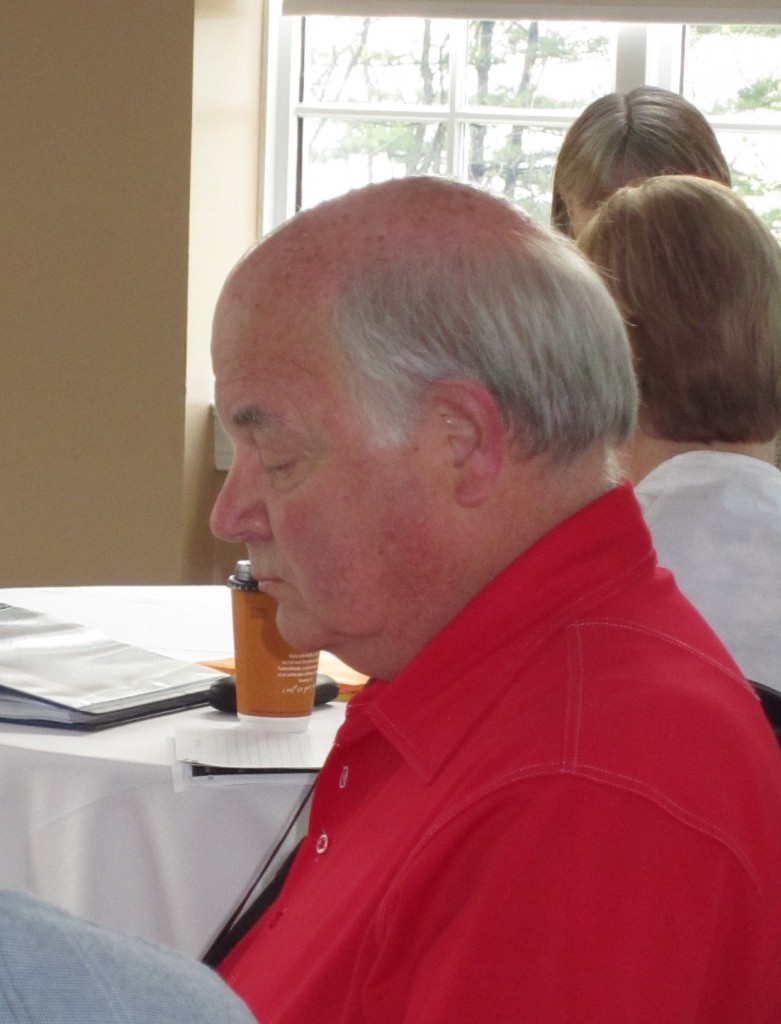 John Taylor, has served on city council longer than any other individual. John Taylor’s official biography will tell you all about the things he has done – and it is impressive – but working at it for 25 years ,what else should we expect.
We wanted to dig a little deeper and tell you about the John Taylor that you don’t see every day. The man who knows more about the city than any other council member and frequently wears his heart on his sleeve.
John has lived in Brant Hills for the past 37 years along with his wife Kathie and their son Ian who has recently moved to develop his professional career in finance.
His “official” biog tells of his 24 years of management experience in the private sector where he gained extensive and diversified skills in both the packaged consumer goods and pharmaceutical industries. He also holds an honours degree in Chemistry from the University of British Columbia.
That chemistry degree was evident when the public relations people from Enbridge Pipeline were in town recently trying to convince the 85 people in a city hall conference room that there was no problem reversing the flow of a pipeline that runs through John’s Ward. 
John Taylor strongly believes that municipal government works best through the active involvement and participation of the city’s residents.
When John holds a community meeting it is more like a club meeting. The first event at which I watched him interact with his residents he was at a table with four other people playing a game that involved checkers. People would drop by, sit down and chat about an issue and then move on.
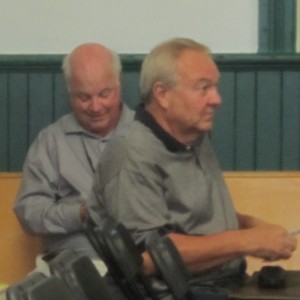 John Taylor sitting at the side of the room while a loyal constituent, John Timmins takes in the meeting. On another occasion, in Lowville when the changes to the park were being discussed, John sat at the side of the room and people came over to talk to him. He seldom goes to the front of the room to take the microphone – unless the public is talking about putting a highway through the Escarpment and then John Taylor is front and center.
John Taylor won’t always be with us – and there doesn’t appear to be anyone that will carry the torch as high and as consistently as he has.
As City and Regional Councillor for Ward 3, John is committed to continuing work in partnership with residents to build on past successes and tackle the urban and rural challenges facing Burlington and Halton this term. such as:
The city’s media release points out the John continues to fight for a more affordable multi-year financial and organizational plan that will result in no more than a 3% annual City tax increase. That one is going to be a challenge for John – but he has some ideas up his sleeve that will get put before his fellow council members later this month. John will want to move more funds into infrastructure repair – which is more than $10 million short. One does need to point out that John was on Council for the past 25 years when the shortfall took place.
 Taylor in full campaign mode greeting a voter. Our Burlington has a good photo file for John Taylor but we wanted pictures from his early years in politics and maybe even some of John with a full head of hair. There are pictures of John in a suit canvassing door to door.
Kathie adds that “John had always been interested in politics and this seemed like a great fit for him. He is definitely a committed individual and the opportunity to serve the community was just up his alley. It gave John an interest outside of work and as it was considered a part-time position, it would not impact the family dramatically. We had no idea what we were getting into!” She nevertheless welcomed the idea of John becoming involved in Municipal politics.
“When John first ran for public office there were two Councillors per ward – one at the City level and one at the Regional level. John took over a position for the City. One Council meeting and a few reports to read was my understanding. Boy was I wrong!”
Joan Little, who sat on Council with Walter Mulkewich and was once his campaign manager, now writes a by-weekly column for the Spectator, didn’t know John Taylor all that well but will tell you “that he faithfully attended every council meeting in the months before the municipal election in 1988 – took it all in, the way he does now. I just remember John being very informed.”
 When Nelson Aggregates bought the land shown in the small orange rectangle it was John Taylor alerted the community to what this could mean to north Burlington. That was the first step of a seven-year fight to have the application for a quarrying permit turned down.  I also recall him spearheading the Mid-Pen fight right from the time the province (I think Mike Harris himself) made a presentation in the Niagara area, and that’s been his baby ever since.” I also recall him spearheading the Mid-Pen fight right from the time the province (I think Mike Harris himself) made a presentation in the Niagara area, and that’s been his baby ever since.”
The city’s media release says Taylor “has been described as the hardest working member of Council since his election 25 years ago. He is passionate about fiscal responsibility and has a broad perspective of his responsibilities, devoting as much time to Regional issues as he does to City concerns. He has been a strong voice for Burlington at the Region and has frequently bridged gaps between the two.”
The people at the Burlington Art Centre will tell you of the ideas he brings to Board meetings over there. John at one point thought the Art Centre might be moved to the parking lot on Elizabeth Street that was once going to be the home of the McMaster University DeGroote School of Business.
John does manage to get some time for himself and his wife. He once came close to apologizing to council for being away on a cruise with his wife and asked if a matter that was on a future agenda could be moved until he got back.
John manages his files – how shall I put this, in his own unique way. Paper work has never been his strong point – but details seldom gets past him. He has been around long enough to know where the strengths are at city hall and where the level of accountability could be stronger.
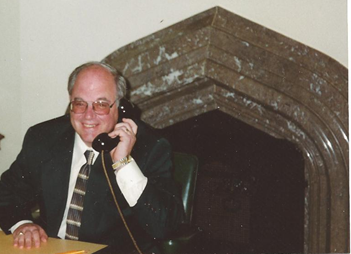 If there was ever any doubt as to his political affiliation the smile Taylor wears as he sits at a desk in a replica of John George Diefenbaker’s office answers that question. He is also the best link the city has between our city hall and the Regional offices. Not a strong player at the provincial level – and one is never quite sure which side of the political spectrum John favors, he will go where he has to go to get what he wants. For John Taylor it is all about Burlington – he is just an actor in a production he wants to see go on forever.
Taylor joined a Council that was led by Roly Bird. Joyce Savoline was a member of that Council as was and Walter Mulkewich, who went on to become Mayor.
Mulkewich says he “first met John Taylor when he was a citizen activist lobbying myself and City Council on the subject of then controversial subject of market value assessment in the mid nineteen eighties. As a citizen activist he was knowledgeable, tenacious and committed to evidence based research.
“John brought those characteristics to his work as an elected Councillor for the past twenty-five years. Most significantly, he carried into his role as a member and leader on Council, his citizen roots, a strong sense of community, a belief in fairness, and an ability to frame specific issues within a larger picture of where the city needs to go to continue to maintain an excellent quality of life for its citizens.”
Those who work with John will tell you of his approach to problems. When the Bethany Residence had some problems – John was there; when the owner of the Phanton House in Kilbride had some problems, John was there. When the fight to prevent Nelson Aggregates from getting an additional permit to quarry land in the Escarpment was really tough, John was there.
You will frequently see John meeting with someone who heads up a community group and slipping a cheque into their hands.
When the politicians want to do something John feels is fundamentally wrong council solidarity get tossed. There was one occasion when Burlington’s city council wanted to go into a closes session to discuss a city salary matter and John said that if they did he was going to leave the council chamber and stand in the atrium of city hall and tell anyone who would listen, what council wanted to talk about in private.
The city’s solicitor recently wanted council to go into closed session to talk about (wait for it) the pier and John said he wouldn’t go along with that one – not until the report with the numbers in it was in his hands.
John reads the reports he is given and scoots around city hall to talk to staff and dig a little deeper. He’s been doing this for 25 years and staff knows he has done his homework.
John can be impish at times. He can also be very impatient as well. When Ward 2 Councillor Meed Ward once called for a recorded vote on five – might have been six – matters, Taylor who sits beside her, rolled his eyes and stood up each time to vote against her motion.
While John was a true believer when it came to getting the hospital upgraded he wasn’t about to just turn over $60 million to the hospital. In the early stages of the negotiations John argued strongly against the city putting up the money that was going to pay for a parking garage. John wanted a bit more than that for $60 million.
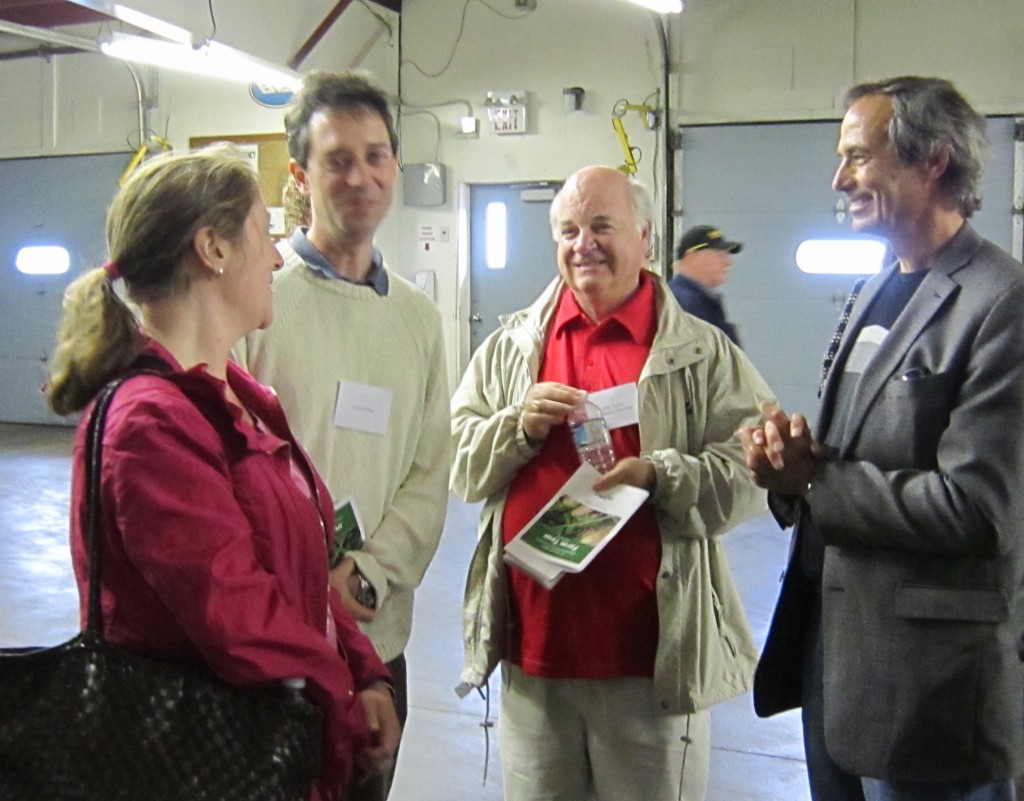 There he stands, in the center, with members of the British Peerage, Lord and Lady Acton on the left and Regional Chair Gary Carr on the right. They all got along just fine. While Region likes to believe Burlington has an agricultural base John fully understands what there is north of Dundas. He was part of a Regional tour more than a year ago during which he met the fifth Lord Acton. Burlington seldom sees members of the British peerage in the city – but there he stood. John Acton, a pig farmer who got along with those farmers on the tour, that is until Acton told the farmers that he loved all the pigs he had – about a dozen – and he knew the names of every one of them. The room immediately saw a different farmer in front of them.
John Taylor stood beside the man whose forbearer, the first Lord Acton who in 1887 gave us the phrase: “Power tends to corrupt, and absolute power corrupts absolutely. Great men are almost always bad men.”. When you talk about Burlington – you have to talk about John Taylor – and the power he had – he didn’t allow an ounce of it to corrupt him in any way whatsoever.
We are fortunate to have him.
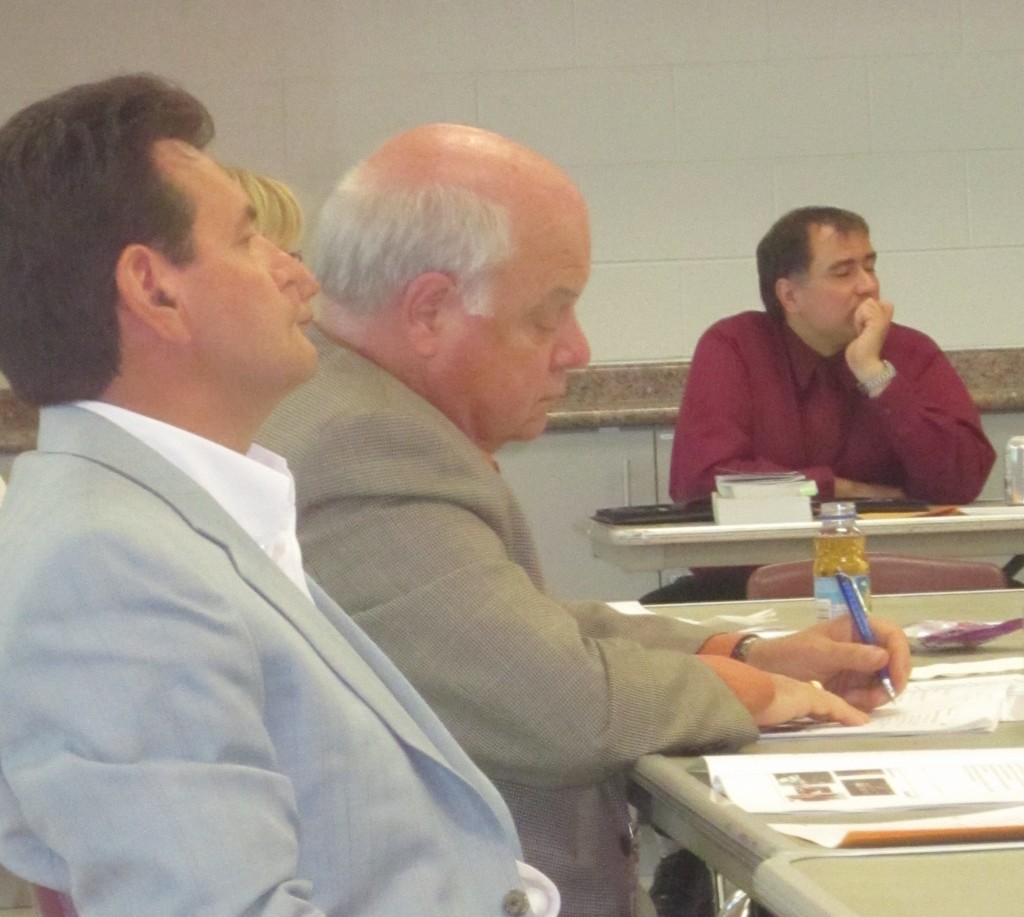 Councillor Rick Craven on the left recomended John Taylor for the Jubilee medal. The two of them are the city’s strongest committee chairs. Councillor Rick Craven put John Taylor’s name forward. Other medal recipients are: Thomas Dykes, Dr. William Charles Procter and Officer Cadet David Brennan.

 By Jim Hamilton and Frank Myers By Jim Hamilton and Frank Myers
BURLINGTON, ON February 18, 2013 In the spring of 1973, Bill Warren joined a new camera club being started in Burlington. The group, named the Latow Camera Club, met once a month in the general meeting room on the second floor of the Burlington Mall. Latow was understood to be a native word meaning ‘beam of light’.
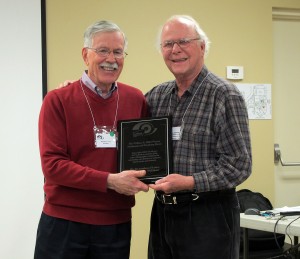 Latow Photographers Guild President Tom Stephens congratulates Bill Warren on 40 years of continuous and outstanding service. That was forty years ago and Bill Warren is still an active member – 40 years of continuous membership is quite an accomplishment. However, Bill has not just been a passive member of the club; he has been a very active and key member of the Latow Photographers Guild for that whole time.
Over the years, Bill has mentored many Latow members. He has served in executive and committee positions and was President for two separate terms. Due to his love of black and white printing, the darkroom has been one of Bill’s favourites. He has either obtained donations or built much of the equipment in those facilities and he has looked after its maintenance for years.
It was Bill’s idea to hold an annual photography seminar, an event that has made the Latow Photographers Guild known not only in Ontario but in New York and Quebec. He has served as its Chairman and did practically everything from obtaining speakers to almost single-handedly managing the event for many years.
It is this annual event that continues to fund much of the photographic equipment enjoyed at Latow today.
Bill was recognized a few years ago for some of his service to the community and participation in photography by being voted as Burlington’s Art Person of the Year. However, Latow had never really officially honoured Bill to the extent he deserves, so it was felt that Bill’s fortieth year of continuous participation and service in the club was the right time.
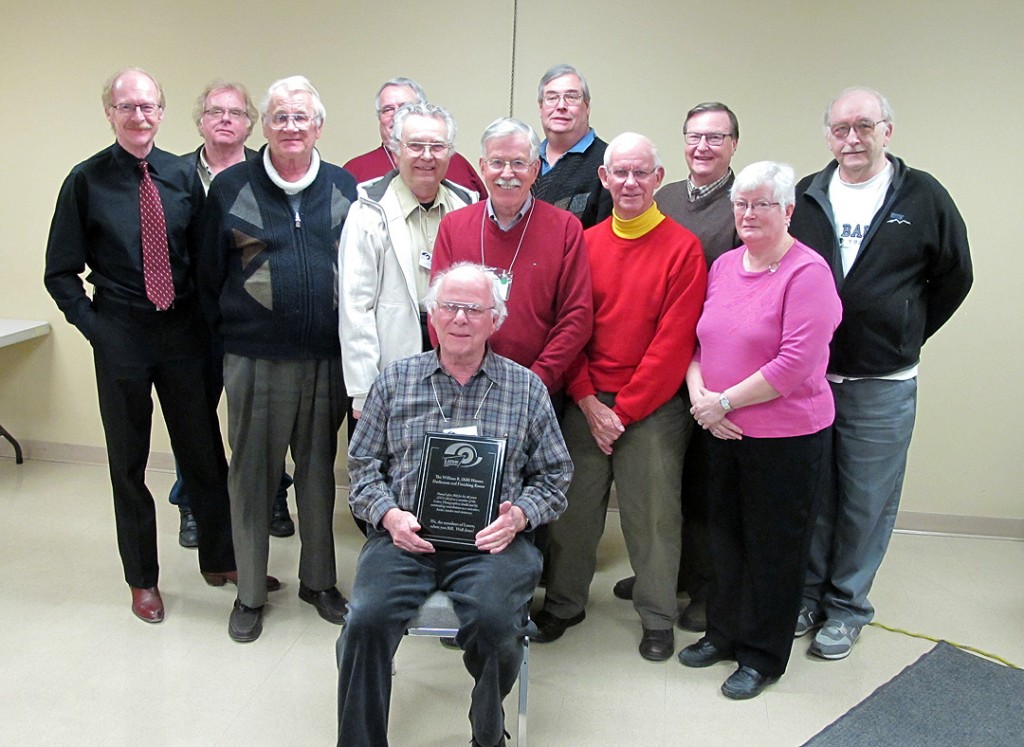 In the back row from left to right: David Craig – President 1976 – 79, Bill Shotton – President 1996 – 97, Johan Wigt – President 1985 – 86, Peter Young – President 2001 – 02, Joh Friedrich – President – 2005 – 07, Tom Stephens – President 2011 – 13, David Gruggen – President 1986 – 88, Arnold Koopman – President 1973 – 74, Jim Hamilton – President 1988 – 90, Toni Browning – President 2002 – 04 & 2009 – 11, Brian Hickey (never has been President but “old-time” member). In the front row middle: Bill Warren – President 1979 – 81 & 1992 – 94
At Latow’s monthly general meeting recently , the club made a presentation to Bill and announced the naming of the Burlington Art Centre’s darkroom and finishing room area “The W.J. (Bill) Warren Darkroom and Finishing Room”. Fifteen former Presidents attended to share in the occasion to honour Bill’s contributions.
Latow President Tom Stephens says, “There is no one who has been more giving of his time or has promoted Latow to a greater extent over the years than Bill Warren. We’re very pleased that he continues to volunteer for many duties in service of Latow, even today.” In typically modest fashion, Bill replies that he feels he is the one who benefits from volunteering because he derives so much pleasure from it.

 By Pepper Parr By Pepper Parr
BURLINGTON, ON. February 15th, 2013. The theory is that if you invite a celebrity to your event more people will show up – and that would apply in Burlington if you invited Walk off the Earth. Inviting the Mayor of the city to open an event – don’t think that is going to pull the crowd James Burchill, wants for his Spring into Business event – nevertheless the Mayor is going to deliver the opening remarks at the “Spring Into Business” Networking & Trade Show Event to be held at the Burlington Performing Arts Centre March 21st.
If you are an independent business operator mark that date on your calendar – actually you probably don’t have to – Burchill has the best list of smaller business operations in the city. The one thing Burchill does exceptionally well is promote himself and his ventures.
 The BiB – Burlington in Business crowd at the Waterfront Hotel where they meet once a month. Founder James Burchill has moved his gig to the Performing Arts Centre for a March event. Great bar over there – can they handle 500 + thirsty people? He held a mini-trade show at the Beaver and the Bulldog a couple of months ago – the room was packed which led Burchill to believe he could move to a larger, brighter venue and put on a bigger event. He might be right – it was certainly worth the risk.
The event is a joint venture between all the Social Fusion Networking groups and hosted by the beautiful Burlington Performing Arts Centre, this event will cater to approximately 500 people and showcase 25 local business vendors from 5pm through to 7pm. Admission is free and has already attracted over 350 businesses from far-afield as Niagara through to Toronto.
Social Fusion Networking is the creation of James Burchill who launched the first event in January of 2012. To date these networks have attracted many thousands of local businesses seeking a new way of networking. “It is my understanding that SFN is the largest independent B2B group in Halton because it exceeds 2500 members.” said James Burchill
With consistently high turnouts each month, SFN events integrate the best of modern social media and combine it with classical face-to-face networking. The results and feedback has been nothing short of amazing with James’ efforts being publicly acknowledged by Meetup.com as a “Top 10% Network.”
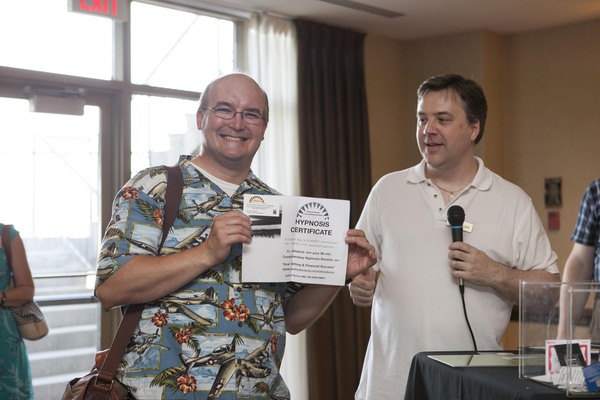 James Burchill, on the right, announcing the winner of a door prize – a session with a hypnotist. Interesting. Social Fusion Networking ™ was developed by James Burchill after he noted a series of problems with current B2B networking approaches. The punitive clauses that restricted members to one or few groups, the punishments for failing to attend, the caps and limits on how many people could participate encouraged Burchill to create a new way of networking with No Fees, No Pressure and No restrictions. Meeting monthly at local venues and available always online, SFN integrates a mixture of channels allowing people to connect and communicate in a manner and fashion that suits them best. SFN events are sponsored and advertising supported in lieu of membership dues.
The group has an interesting web presence and has in the past met on Wednesday’s at the Waterfront Hotel where they take up all the space at the best watering hole in the hotel. The Mayor made an appearance there once – that didn’t do anything to attendance.

 By Staff By Staff
BURLINGTON, ON. February 15th, 2013 A Burlington man , employed by the Halton Catholic District School Board, faces a charge of Possession of Child Pornography following an investigation by the Halton Regional Police Service – Internet Child Exploitation Unit.
On February 14, 2013, Gary O’Brien, 64 yrs, was arrested at his residence and held for a bail hearing scheduled for today at Milton Provincial Court.
The accused is an Educational Assistant at Notre Dame Catholic School in Burlington and has been suspended from his duties by the Halton Catholic District School Board.
The Halton Regional Police Service is committed to the thorough investigation of child exploitation incidents. Any person with relevant information on this or any related matter is encouraged to contact the Internet Child Exploitation Unit at 905 825-4747 x8984, Crime Stoppers at 1 800 222-TIPS(8477), through the web at www.haltoncrimestoppers.com or by texting “Tip201” with your message to 274637(crimes).

 By Pepper Parr By Pepper Parr
BURLINGTON, ON February 8, 2013 A tireless fighter who saw herself as part of a “loyal opposition” when she spoke to a city council committee Monday of last week – Jane Irwin died Thursday evening.
Jane was a force to contend with who did not go quietly into the night. Monday evening she addressed a committee of city council and began her talk by telling members of council that while they were sitting in comfortable seats there were delegations who had to shift their cane from side to side and stand as they spoke and answered questions.
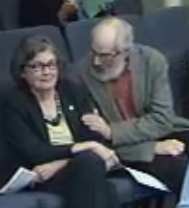 Jane Irwin’s husband Richard, gives her an affectionate pat on the arm as she prepares to delegate to a city council committee on why cultural heritage value matters. Jane was speaking to council about heritage homes; one of the passions of her life. Her husband Richard reached over and gave her an affection pat on the arm as she rose to speak to the Infrastructure and Development Committee that was considering a report from Heritage Burlington, the city’s Advisory Committee on heritage matters. They wanted to remove immediately all the homes on the much maligned “B” list, which is part of the city’s Municipal Register of Cultural Heritage Resources. The B list was part of a Registry the city maintains of homes that are felt to have some historic or cultural value to the city.
Irwin believed the city was getting rid of close to one-third of the properties in the city with significant cultural heritage.
Any home on the B list of the Municipal Register of Cultural Heritage Resources could not be demolished without going through a 60 day waiting period.
Many home owners and several council members felt this wait requirement was a financial encumbrance on what a property owner could get if it were put up for sale. The real estate community likes to perpetuate that point – that having to wait 60 days would lessen the amount a property would fetch on the open market. There is no evidence, other than the word of real estate agents who are looking for a listing, that a 60 day wait impacts the value of a property.
The disappearance of the B list would mean close to one-third of the homes that have historic cultural value would be taken off the Registry could then be demolished by anyone who wanted to apply for a permit to do so, and that was why Jane Irwin stood, for what turned out to be the last time, before city council, imploring them to fully understand what they were doing and to perhaps re-think what she fully expected them to do.
“Why is it” asked Jane Irwin, “that the city of Burlington has a reputation for being boring? A good many interesting people have lived here and a lot of interesting people still live here.” Burlington’s reputation had not kept up with the change and growth of the city, she maintained.
“Burlington is not the most fascinating, the most interesting place or the most inspiring city on the planet – not even in Halton. In fact it is called BORINGTON. Is that news to any of you?” she asked, while Mayor Goldring sat glumly in his seat.
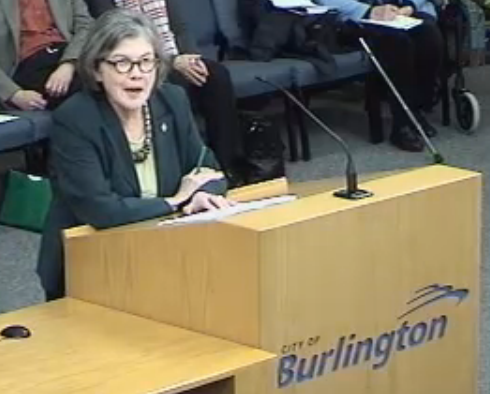 She spoke passionately, she told city council that Burlington was known as BORINGTON and that the city lacked character and colour. she told them that cultural heritage matter and that without it the city would be “hollowed out”. None of it mattered – they voted to get rid of what Irwin maintained was one-third of the properties in the city and on the Registry, with historical significance, “There is no question why we are perceived as a bland place, there is nothing special, nothing unique about us – we lack character and have no sense of identity”, she said
“We are not a real place, not a place with any interesting character”, she added.
Irwin said she was reminded of a comment an American author made about the city in California she lived in when she said: “There is no there, there.”
Irwin though that perhaps the author’s home town was too new to have a history but then realized that the history it did have, had probably been hollowed out and that is what Irwin thinks has happened to Burlington.
“Every place on earth has a history, a past, character and a story to tell. “I’m suggesting” said Irwin “that something comparable has happened to Burlington – our past, our history, has been hollowed out. Identity for both people and places can be hollowed out”, she added.
Irwin explained that “People lose their sense of identity from the inside when they lose their memories, places lose their identity when their history is lost when their places are lost, when the history turns into amnesia – you’ve heard some examples of that here tonight.”
“The outside characteristics of personal identity are lost when the physical reality of their identity, the quirkiness and the scars of their life are forgotten, either because they were in a witness protection program or they had cosmetic surgery”, explained Irwin.
“Places lose the visible reality of their identity when their historical built structures and streetscapes are erased or replaced. Those of you who have been listening to me will realize that I am talking about what planners call cultural heritage value.
Some think cultural heritage value is an academic term dreamed up by people who do not live in the real world.
Cultural historic value is what I’ve been talking about; a sense of identity, a sense of something authentic, something real. It is a part of our experience of everyday life – it is rooted in our common experience.”
“People feel this” maintained Irwin, who went on to explain that while cultural heritage value may not be a term many understand or are comfortable with – “ but it is really the same as quality of life, which we do understand, advocate and promote. Heck it’s even in the city’s Strategic Plan
They will feel that, they will experience that and so cultural historic value is what we know as quality of life. – a term that is accepted”.
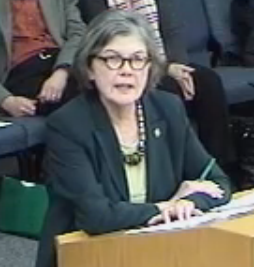 Jane Irwin, at her very best. Irwin’s concern was that while there are thousands of people in Burlington who live in the homes that were built in the 1910’s and 1920’s – removing the 350 on the B list has the potential to put those buildings at risk.
There is a limited supply of these buildings and your vote today vote will, if this council votes true to form, will remove 350 properties – one third of our heritage.
“These B properties” explained Irwin, “have not been re-evaluated, none have been re-inspected and we don’t have adequate information on which to make decisions”. She went on to say that “we are throwing out the babies with the bath water. People are being told that heritage homes don’t count.”
“Perhaps this is a time-saving exercise – remove these 350 homes from the Registry and you never have to deal with them again.”
“You ignore your staff reports” said Irwin, “you often deride them.”
In the end – it didn’t matter. Council in committee voted to keep ten properties on the Registry until the end of June when the evaluations are complete and a decision can be made as to what stays on the Registry and what can be removed.
What was certain however was that the B portion of the Registry is now “history”, literally. Councillor Craven summed it up when he said after six years of bitter, nasty debate, compromises have to be made. “While I regret losing the B’s” he said, “I am prepared to give them up.”
Council in committee voted to accept the report.

 By Pepper Parr By Pepper Parr
BURLINGTON, ON February 6, 2013 They came to be part of the city’s history. They brought big items, small items, personal items and significant items. Everything they brought was photographed, recorded and then pressed into clay from which artist Peter Powning would make a casting out of bronze and place in the Spiral Stella that would sit outside the Performing Arts Centre at the intersection of Locust and Elgin Streets.
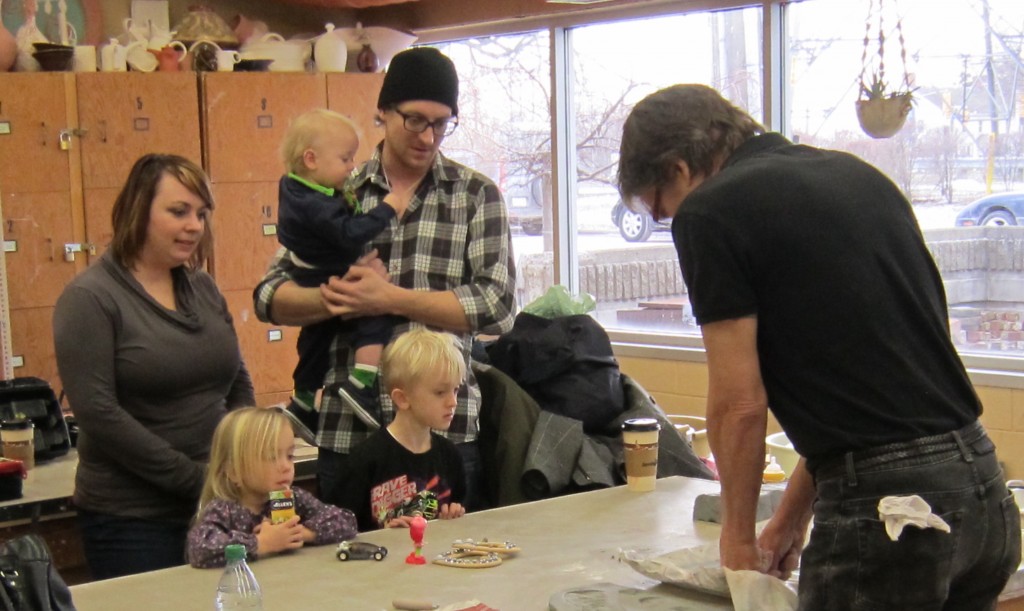 The fascinated eyes of children – these two are totally focused on what artist Peter Powning is doing with an artifact they brought in as part of the cultural mulch event held at the Burlington Art Centre. Artifacts were collected to become part of the Spiral Stella that will be erected in front of the Performing Arts centre in July. Close to 250 people brought in their “stuff” . Don Graves, a local artist, who happened to be at the Burlington Art Centre last Saturday hosting his first solo exhibit had his wife take his walking cane to have a clay impression made.
Jonathan Smith, Curator of the Permanent Collection at the Burlington Arts centre, brought in a pocket watch with a fob engraved with the words St. Andrews College, 1929 in cursive type. That kind of craftsmanship isn’t seen anymore.
 Melanie Booth on the left hands over her Olympic Bronze medal which she won as part of the Women’s soccer team. Jeremy Freiburger, on the right, chief cheese at CoBalt Connects, the company that manages Burlington’s public art program registers the medal which was later pressed into clay to make the impression from which a bronze casting will be made. The stunner for some was Melanie Booth’s Olympic Bronze medal that brought out a very small faux pas from Powning, who to be fair was seeing a lot of artifacts and didn’t realize he had an Olympic medal in his hands.
He asked Ms Booth: “What’s the story behind this” as he arranged a slab of clay to make the impression. Powning hadn’t read the words on the medal, he was trying to figure out which side he would make the impression from but when Ms Booth said “it’s my Olympic bronze medal given to the Canadian woman’s soccer team” Powning’s head shot up when he replied – “really!”
 This is an example, called a maquette, of the type of sculpture Peter Prowning will be doing for Burlington. Each sculpture he does is significantly different. The bands wrapped around the first nine feet of the 16 foot sculpture will hold the bronze casting being made from the clay impressions done this past week in Burlington. It will be a very impressive piece of public art The way the gold medal for soccer was lost is something few Canadians think much about now. If it ends up as part of the Spiral Stella it will become part of the visual history of the city.
Powning was holding what he called ”a “cultural mulch. An event that had him looking at everything he was given, nothing was turned away if he could make an impression in clay, and at the same time thinking about how each piece might be used.
The bronze castings would be worked into the sculpture which will tell part of Burlington’s cultural past.
One man brought an old, rusted pair of roller skates, the kind you had to strap onto your shoes.
Dan Lawrie, the man who felt there should be some art outside the Performing Arts Centre put his money where his mind had gone and funded a portion of the cost of the sculpture. Lawrie who paints when he isn’t working had impressions made from some of his art implements.
With 240 impressions made into the slabs of clay Powning now takes everything back to his studio in New Brunswick and begins the process of casting the bronze pieces that will be part of the first nine feet of the 16 foot sculpture.
He will be doing all the forge work at his studio in New Brunswick and shipping the work to Burlington where it will be installed – which will get a little tricky. With art there are no firm time lines – not quite like making a pie and knowing that it needs 35 minutes in the oven at 425 degrees.
Some excavation work has to be done at the front of the Performing Arts centre to get the base in place. There is a pipeline right underneath that has to be dealt with. The pipeline people will be on hand to make sure someone doesn’t bite into that line.
And then there is a wedding scheduled to take place at the Performing Arts Centre at that time. The bride is not going to want to walk down the “aisle” to the sound of a jack hammer.
But it will all come together and sometime during the second half of July the sculpture will be in place and we can expect groups of people to gather at the site for years to come. One wonders what the Tourism people will do to promote the sculpture.
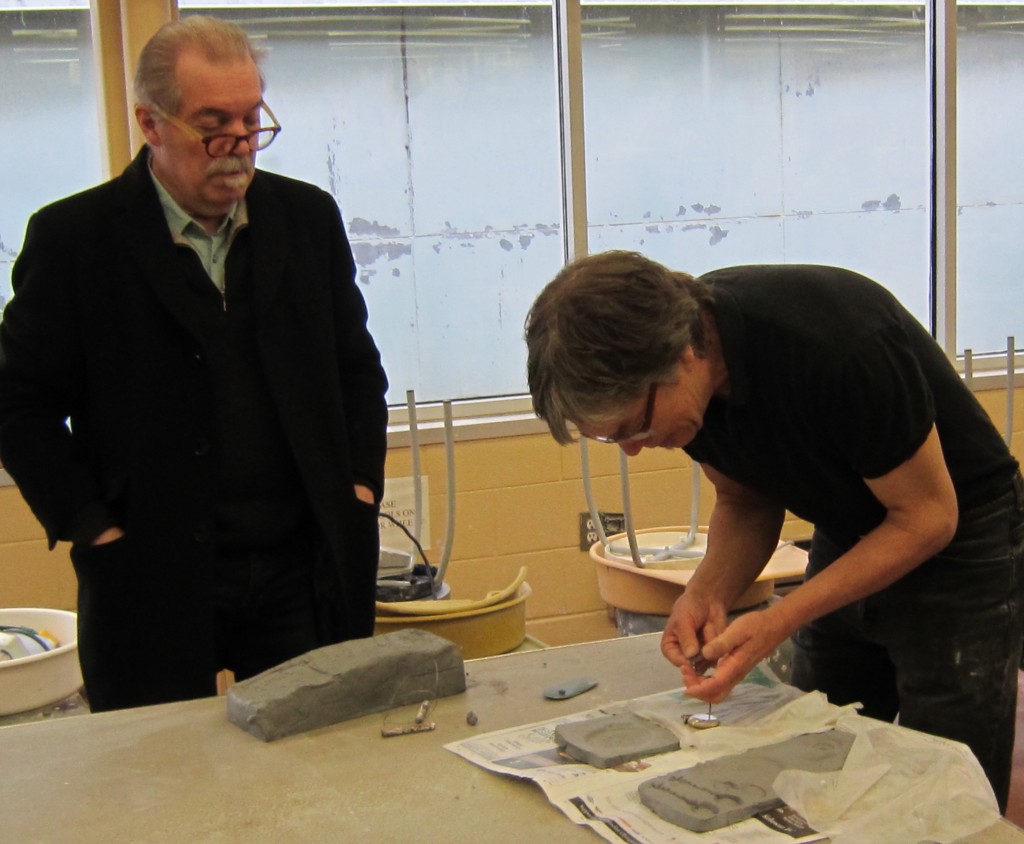 Johnathan Smith, Curator of the Permanent Collection at the Burlington Art Centre brings in a pocket watch with a fob that has a 1929 inscription on it. Peter Powning presses the fob into clay from which her will later make a bronze casting that will become part of the Spiral Stella that will be erected outside the Performing Arts Centre Burlington has done some exceptionally good work with sculpture. There is the magnificent naval memorial at Spencer Smith Park where the bronze casting is more traditional. Then there are the orchids which are a delight – just in the wrong place – a point that Councillor Taylor commented on at a recent council meeting. At some point this city just might do the “orchids” justice and put them in a location where they can be both appreciated an enjoyed. Stuck at the entrance to a railway grade separation is close to the stupidest things the art people in this city have ever done. Why didn’t someone stand up when that decision was being made and ask: “Are you kidding?” But we didn’t – we will get there.
A local videographer, Bob Fleck, has been following Peter Powning around and we can expect to see a bit of film at some point.
CoBalt Connects, the organization that manages the city’s cultural plan has been talking to students at Mohawk and McMaster about the idea of doing a three-dimensional video on the sculpture that would allow people to look at the detail and spot artifacts that they contributed. Good idea.
We are seeing a different approach to how we create, display and promote the arts in this city. The long-term cultural plan will address some of the concerns local artists have about not being included or taken seriously. Progress.

 By Pepper Parr By Pepper Parr
BURLINGTON, ON January 29, 2013 Did you know that CoBALT Connects is the managing partner of the City of Burlington’s public art program? They are! And they are going to be “on hand this Thursday and Sunday at various Burlington locations with New Brunswick artist Peter Powning as he makes “Cultural Mulch” with the community’s prized possessions, turning those objects’ outlines into the bronze cast that will form the facade of his piece.
Jeremy Freiburger, the media friendly maestro who sent us this information about the Cultural Mulch might be the only person in the room – along with the artist of course, who we are looking forward to meeting.
The city does not appear to have spent as much as a dime promoting this event.
The Spiral Stella sculpture that is going to be placed outside the Performing Arts Centre is going to be around for at least 100 years – if this world lasts that long. Tens of thousands of people will look at it and see what we thought was important to us as a community to tell the story of our past.
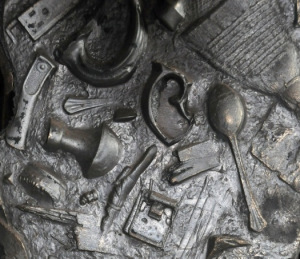 Powning wants to take artifacts the people of Burlington bring in – make a mold and then a casting that will be used in the sculpture. There have to be hundreds of people who have “stuff” in the attics or their basements that artist Peter Powning would like to consider.
 Touchstone was above all a collaborative community enterprise. My idea of asking the community to take part in creating it’s own narrative was the germ of the project. By providing me with objects and artifacts that had a part in defining Canmore for them personally, people gave me the source material for the bronze relief that is at the core of this sculpture. I wanted to encourage community involvement. But if people don’t bring out their artifacts – there won’t be anything to make a casting of and nothing for the public of the future to see.
At some point in the future there will be a tourist standing in front of the sculpture and asking: “Is that all this city has to show us about their past?”
Burlington has this annoying habit of getting the Mayor out there to have his picture taken every time there is a donation or an award being given. Last night he was at a table signing the Freeman Station Joint Venture document – a project he really didn’t get behind. At least we didn’t hear him say very much when the Friends of Freeman Station (FOFS) were struggling to find a home for the structure.
 Peter Powning on site in Canmore, Alberta where he installed touch stone, a sculpture along the same lines as the planned work for Burlington. Powning will be in Burlington so dig through the keep-sakes trunk and bring an object that matters to you. It’s a great way to be a part of the artistic process and to either contribute an object, or simply watch the process in action. Objects will not be damaged in the process, and will be returned after the mold is cast (about five minutes).
Sessions are on:
Thursday, January 31st: Burlington Public Library, Central Branch, 10 am to 3 pm
Thursday, January 31st: Burlington Performing Arts Centre, 7 pm to 9 pm
Sunday, February 3rd: Burlington Art Centre, 2 pm to 4 pm

 By Staff By Staff
BURLINGTON. ON. January 29, 2013 We see a couple of these reports each month and we can expect to see more as our population ages. A recent police media release went like this:
Male Missing: Elderly Man with Alzheimer’s Believed to Be Lost in the Toronto Area
The Halton Regional Police Service and the Toronto Police Service are seeking the assistance of the public in locating a missing elderly male person who is believed to be lost in the Toronto area.
The missing male person is a 82-year-old senior who resides in the City of Burlington in the Regional Municipality of Halton. The missing person has recently been diagnosed with Alzheimer’s. The missing person is dependent upon certain medications and his health may deteriorate without his prescribed medication, and may appear confused. The male will be reluctant to accept help if approached.
At approximately 10:53 p.m. a member of the Halton Regional Conservation Authority Parks Department was on routine patrol.
In this situation the follow up was a good news story:
A Parks Officer came upon the scene of a single motor vehicle collision on Milborough Town Line north of Campbellville Sideroad in the rural area of MILTON. Sometime prior to the officer’s arrival a single motor vehicle had left the roadway and struck a tree.
It was determined that the vehicle involved in the collision belonged to Gerard HOOLBOOM, who had been reported as missing to Halton Regional Police earlier in the day.
Mr. HOOLBOOM was found conscious, near the vehicle. The officer immediately rendered first aid to Mr. HOOLBOOM for minor injuries and summoned EMS and police to the scene.
The Halton Regional Police take these calls, broadcast the missing person to the media and we do what we can to get the message out to the largest possible community.
Because this is such an emotional issue for any family that goes through the experience the Canadian Association of Chiefs of Police and the Canadian Centre for Information on Missing Adults (CCIMA) have provided a guide that is very well put together.
CCIMA is a bilingual online resource that provides information and acts as a referral centre for Canadian families and friends of missing adults.
The guide provides families with useful and practical information to help cope with the realities associated to having a missing adult. Bookmark this page – you don’t want to have to search for it if you need it.
The police are behind this: “We wholeheartedly support the efforts of CCIMA in their development of this comprehensive guide for families of missing adults to assist them in what is often an emotionally overwhelming situation,” said Deputy Chief Andrew Fletcher.

 By Pepper Parr By Pepper Parr
BURLINGTON, ON. January 22, 2013 Our Burlington has a new feature that we are calling the Frizzle feature.
It came about as a result of an email we got from Jim Frizzle whose neighbour happens to be Keith Strong – which, if you know Keith Strong, means you are going to get roped into doing something for the community.
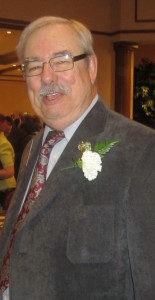 Senior of the Year Jim Frizzle tells publisher to “make it easier to read your newspaper”. Result – the Frizzle Feature. Frizzle did so much for the community that he got named Senior of the year – which he thought gave him the right to tell us what to do.
Turns out what Frizzle was telling us to do was a great idea which I took along to my techie and asked – “Can we do this? The techie said: “ I can do that faster than you can say – Bob’s your uncle” and I said then do it.
 This feature, which makes it easier for people who need larger type to read your newspaper on a web site, came about when Jim Frizzle told us he needed it. Well turns out the techie didn’t have an uncle named Bob and it took a little longer than expected – but because of Jim Frizzle and all the other “old farts” out there, you can now click on that little box in the upper right hand corner of the story and make the type larger if that’s what you need.
We are looking for an optician that might want to sponsor that little feature.

 By Pepper Parr By Pepper Parr
BURLINGTON, ON. January 21, 2013 They were all there. Those that farm the rural part of Burlington; those people that live in the community and don’t want to see all that much change. The stop the Escarpment highway people weren’t out in force but they were there as well. The politicians that work the territory were in the room. And loads of staff people
The meeting took place in the elementary school in Kilbride and was part of the public process in figuring out how our Official Plan should be changed.
Every city in the province has an Official Plan that it must revise every five years. Some of the reviews are a “lick and a promise” and Burlington has had a few of those but this time out the city wanted to do some digging and begin asking the taxpayers just what they wanted their city to look like in 25 years.
 The vision for Rural Burlington as captured by a facilitator during the Rural Summit that took place at Kilbride Elementary school. Burlington is that odd combination of a well-developed suburban community with small patches of urbaness to it and then a large swath of land to the north that is rural. There are farmers up there that actually earn a living from the land they work.
There are no dairy herds; the last of the all-purpose farms went some time ago but there are people who take off quality hay and the equestrian sector is active. Strawberry farms do a decent business as well. But there really isn’t a farming community and while many people talk about reviving that part of the economy it is not likely to happen in rural Burlington.
What is happening is the development of large properties with houses that have in excess of 5,000 square feet and both indoor and outdoor swimming pools. Some of these properties are built on 15, 25 and 40 acres properties with a portion of the land taxed as residential housing and the rest taxed as farm land – with the land rented out to local farmers who are quite content to take hay off land that they rent. No long term investment and rents that are quite reasonable.
 This is the rural Burlington residents want to keep – walking trails and quiet countryside. There is a farm on the north side of Dundas that thousands of people drive by weekly without knowing there is a pear farm up there with trees that are more than 100 years old.
For those who live in north Burlington there is always the sense that the lifestyle is being threatened. There are property owners with holdings on the north side of 407/Dundas who fully expect to sell out to a developer. There are people in the Burlington Economic Development office who see opportunities to develop the north side of 407.
The Region says that isn’t going to happen and the province says it can’t happen – but things change and over time many believe that they will see encroachments on what are now rural lands.
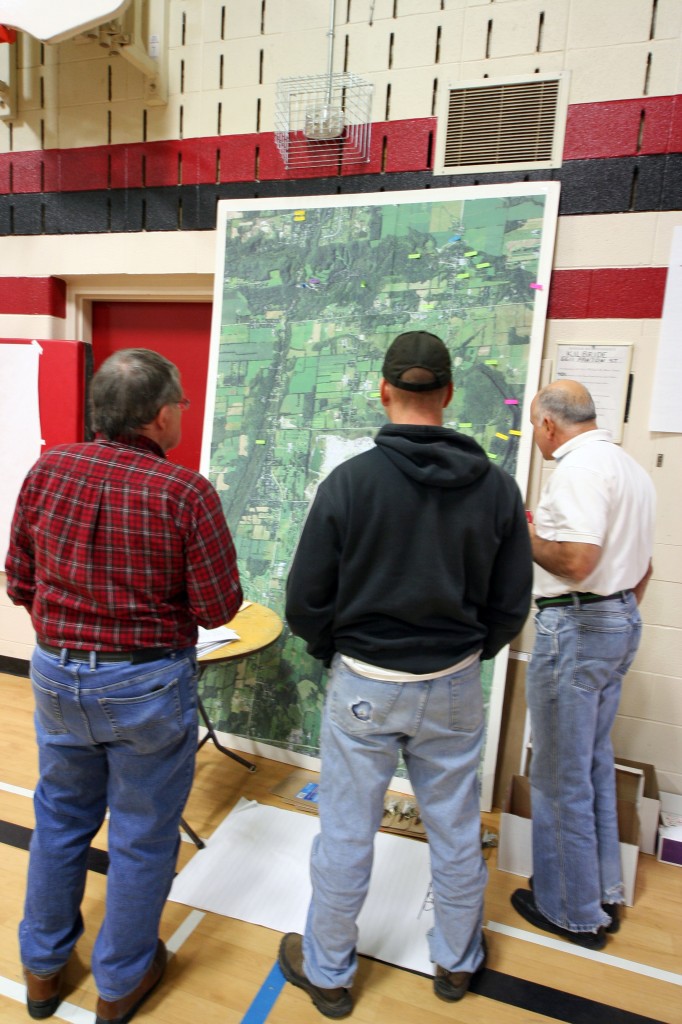 This is what rural Burlington is all about – large fields, small farms and people wanting to maintain a lifestyle. The boundary between suburban and rural used to be Dundas Street – the Old Hwy 5. When the 407 got built that boundary shifted and we saw the Alton Village community develop.
While any Niagara to GTA road is certainly on hold for now – the province has been consistently thinking about where a road can be built to handle all the traffic that wants to get to Windsor and Niagara Falls to cross into the United States.
The bulk of what Ontario produces get shipped to the United States and much of what we consume comes from the United States and heads into that huge GTA market. To get to and from that American market trucks need roads and the QEW has just about reached its peak.
The people who do the long term economic development thinking look at the Escarpment and think they could run a road through that part of Burlington.
John Taylor who is the biggest asset the city has when it comes to fighting for rural Burlington has taken the position that what comes out of the province in terms of policy doesn’t have to become the law of the land. He firmly believes that the public can talk back and points to the success with the application to enlarge the Nelson quarry – that application was denied and while the wish on the part of the aggregate people to be able to dig out rock and ship it to Toronto hasn’t had a dagger put through its heart yet – the chances of Burlington ever seeing another quarry developed on the Escarpment are very, very slim.
What the city and the Region – include the province in that – have to do is determine just what they want to do with the existing quarry once it is mined out. There are a number of long term opportunities here that the rural community can get behind and be very proactive in determining how their community evolves.
Last Saturday some 125 people met and talked; they made notes and exchanged ideas under the guidance of a good facilitator. What she didn’t do – and many wished she had done was ask people to identify themselves – if not by name then by where they lived. It helps when one has a context into which they can put the remarks being made.
One woman wanted the community to both empower the agricultural sector and support what they want to do. The sense I got from listening was that the agriculture community doesn’t have a vision other than to be left alone. There wasn’t any comment from anyone who identified themselves as a farmer – even though there were quite a few of them in the room.
 The orange outline at the top of this topographical map is where the current quarry is located. That mine is nearing being mined-out. The smaller outline is where Nelson Aggregates wanted to open a new mine. The application for a permit to do that was denied – a huge step for the rural community. Ecotourism was mentioned several times – but other than tossing out the phrase there wasn’t much more meat on that bone. One lady suggested opening up B&B’s – great idea and there isn’t a thing stopping anyone from putting out a shingle today. But even a dozen B&B’s aren’t going to make much of a difference to the local economy or the health of the community. They won’t hurt and if done properly they would introduce more people to what we have and those visitors would speak well of our rural north.
This is the time to do that thinking and at this point there isn’t all that much quality thinking being done. Nemo 7G is in place but other than a large poster that I couldn’t make much sense out of – they’ve not come forward with very much. They do want to think ahead for seven generations – which is laudable, great if they can do it – but we’re not seeing it yet.
Environmental issues are always on the front burner for the people who live rural lives. They know what they have and they know how quickly it can be destroyed. The quarry battle has been fought and won; the Stop the Escarpment Highway battle has been fought to a win – sort of. One never knows what the bureaucrats are thinking and the people paying the bills are usually the last to know.
 Ward 3 Councillor John Taylor, the person who probably works hardest to ensure that rural Burlington does not get turned into another suburb sit with John Timmis at the Lowville school house. Taylor wants to change that and he knows that if he can mobilize the community a significant difference can be made. It takes a lot of work on the part of citizens to attend meeting after meeting and struggle to raise the funds needed to fight powerful interests. PERL (Protect Escarpment and Rural Lands) is exhausted. They won the fight to prevent Nelson Aggregate from getting another permit to quarry rock out of their holdings at Guelph Line and Colling Road but in the process burnt out a number of people who were heavily involved in the Joint Tribunal hearings that went on for close to a year. PERL won – and the community is grateful – meanwhile PERL struggles with debts and have yet to hold a community wide event to celebrate what is a truly astonishing feat.
This business of fighting powerful, well financed interests can grind you down.
One woman thought there was an opportunity to develop an “interpretive centre” on the quarry site while another related a conversation she had overheard in a coffee shop that had the owners of the Mohawk Raceway putting together plans to turn the quarry site into a resort – convention centre with an upscale hotel. That speaker wanted to see a lot more transparency in whatever gets done.
Some of the people who live in the rural community want more in the way of amenities – “there is no place to walk in Kilbride” said one woman. There are apparently no trails – just roadways.
Just about everyone wanted clean, renewable energy – but no wind turbines; solar was acceptable and geothermal was described as the best deal available.
Bike lanes on Walkers Line – a gotta for these people but not so gotta for the farmers who need to move wide equipment up and down those roads. The Bruce trail needed to make better use of the countryside – too much of the trail is along the roadway in rural Burlington.
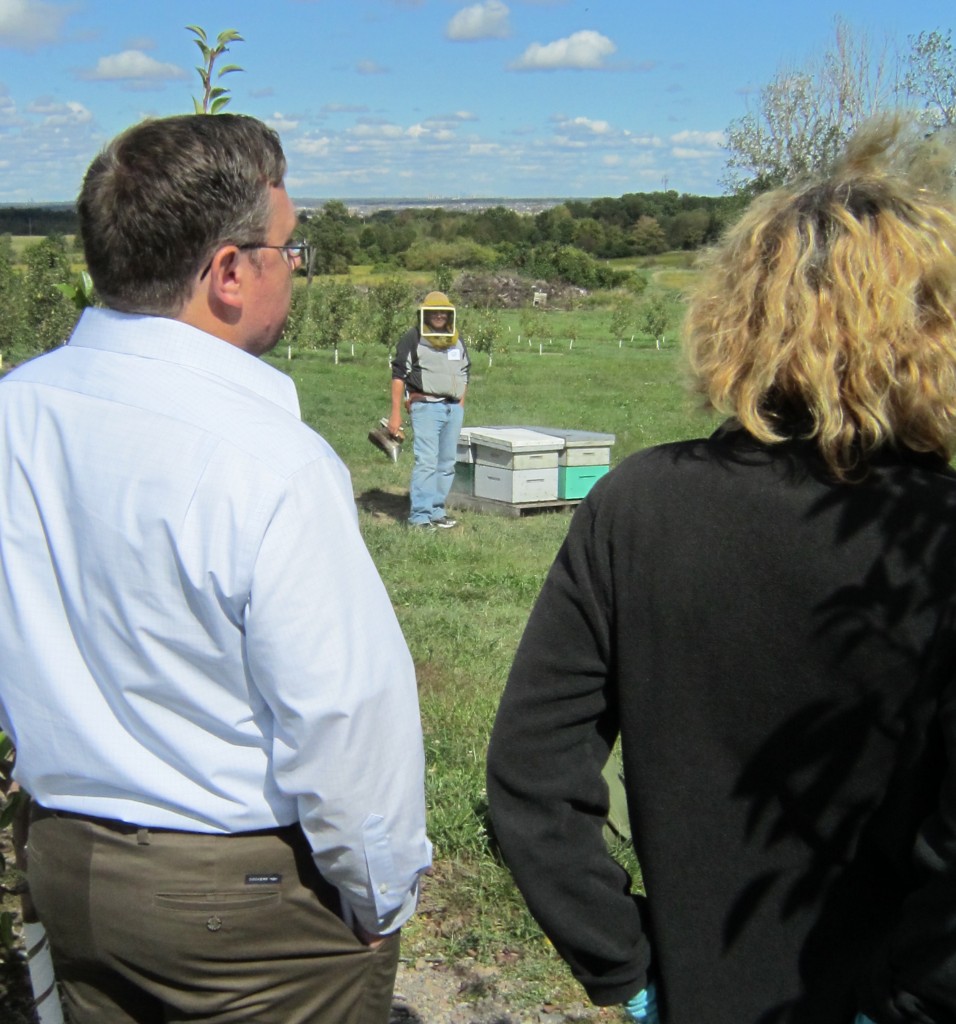 Bee keeper showing people on a farm tour how the bees are maintained and used to pollinate pear trees on a farm on the north side of Dundas just west of Guelph Line. Thousands drive by the place without knowing how big the place is. Another speaker said there is a strong story to be told about just how economically viable rural Burlington is – with about 2000 homes in the defined area it’s difficult to see an economic core. The sum of the agricultural interest, the services the equestrian community provides, the traffic that Lowville Park attracts and the number of really small farms don’t add up to much in the way of economic activity. The biggest job creator has been the quarry. The golf courses are always busy – but are they placeholders for land that might one day get developed? Do the golf players spend money outside the grounds? The Lowville Bistro is business enough during the season and if properly marketed they could extend their season to close to year round. Is there a reason why there aren’t more decent restaurants in rural Burlington?
Someone within rural Burlington needs to do the homework to tease out the economic base – because it wasn’t at all clear there is one.
The airport can’t be allowed to grow another foot seemed to be the sentiment of the room. Milton might have something they want to say about that and the people who are building the 3500 and 5,000 square foot homes want to be able to get to that airport and fly in and out. They have truckloads of money and they want to be able to spend it on the lifestyle they have chosen – which is to live in a quiet community where they can live behind electrically operated gates and do whatever they want.
That didn’t jive with the several comments about the wish for a cohesive community. The moneyed set don’t want to be part of a cohesive community – they want to be left alone.
The day was divided into two phases with a wrap up session. City hall Planning staff would then take everything back to their offices and begin to make some sense out of it all.
The facilitator did everything they could to get people into small groups – four or five at each table, where they were asked to listen to each other while each talked about what they felt Rural Burlington would look like 20 to 25 years into the future.
A recorder took notes.
Every 20 minutes all of the people at each table, except the recorder, moved to different tables and went through the same exercise but with different people. The objective was for people to listen to each other.
With Phase 1 complete everyone had lunch, which was provided. The facilitator then went through the notes and looked for common themes. They created spaces around the school gymnasium where they put up posters on each of the six themes they had identified.
Tourism, Agriculture, Natural Environment, Transportation, Sustainable growth, Cohesive Community.
People were then invited to take their chair to the theme that interested them the most and get into a conversation with others on what the theme meant to them; what Burlington is actually doing now; what will future generations say we have achieved – then, what are the big ideas – the possible projects.
And that was about as much as one could expect from 125+ residents who met on a cold Saturday to talk about what they wanted their city to include in the next version of its Official Plan.
The city had hoped to complete its Official Plan before the end of the current term. Councillor Taylor has suggested the job may not get completed before the end of the current term of Council.
The “retirement” of a key staff member has called for a number of adjustments that were not planned.
Nisha Shirali. an environmental planner and Alison Enns, the Acting Senior Planner on this project and Andrea Smith, Acting Manager of Policy and Research now get to go back to their offices and figure out what it all means and how to work it into the review of the Official Plan.

 By Pepper Parr By Pepper Parr
BURLINGTON, ON. January 21st, 2013 The Burlington Fire Department is looking for individuals who are interested in a challenging opportunity to serve their community as a volunteer firefighter. Applications are now available. The submission deadline is 11:59p.m., Feb. 1, 2013.
There are a lot of gotta’s with this opportunity.
You must be a Burlington resident and be at least 18 years of age.
Meet the volunteer firefighter requirements as outlined on the city’s website
Be prepared to volunteer your time to training, firefighting and other related duties
The Fire Department consists of both professional and volunteer firefighters. Being a volunteer firefighter is no ordinary job; the work is varied and challenging. New recruits will be assigned to Fire Headquarters, Station No. 1 located on Fairview Street or Fire Station No. 5 located in Kilbride based on where the applicant lives. The Kilbride station covers the rural areas of Burlington, mostly north of No. 2 Sideroad.
For more information about requirements, preferred qualifications and how to apply online.
While firefighting can be dangerous the men and women who do this work are exceptionally well-trained. Burlington firefighters did very well in a recent extraction competition.
In the past Burlington firefighters have been recognized for their bravery and public service. It is well paid work with a great group of people.
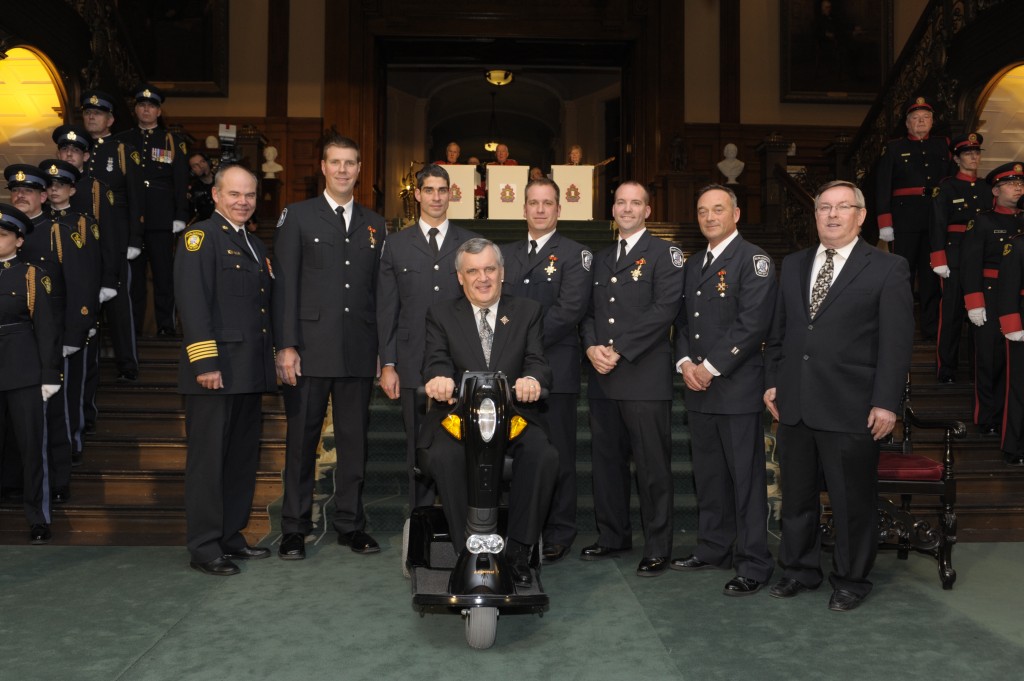 These Burlington fire fighters were recognized by the province for their bravery and excellent work. 
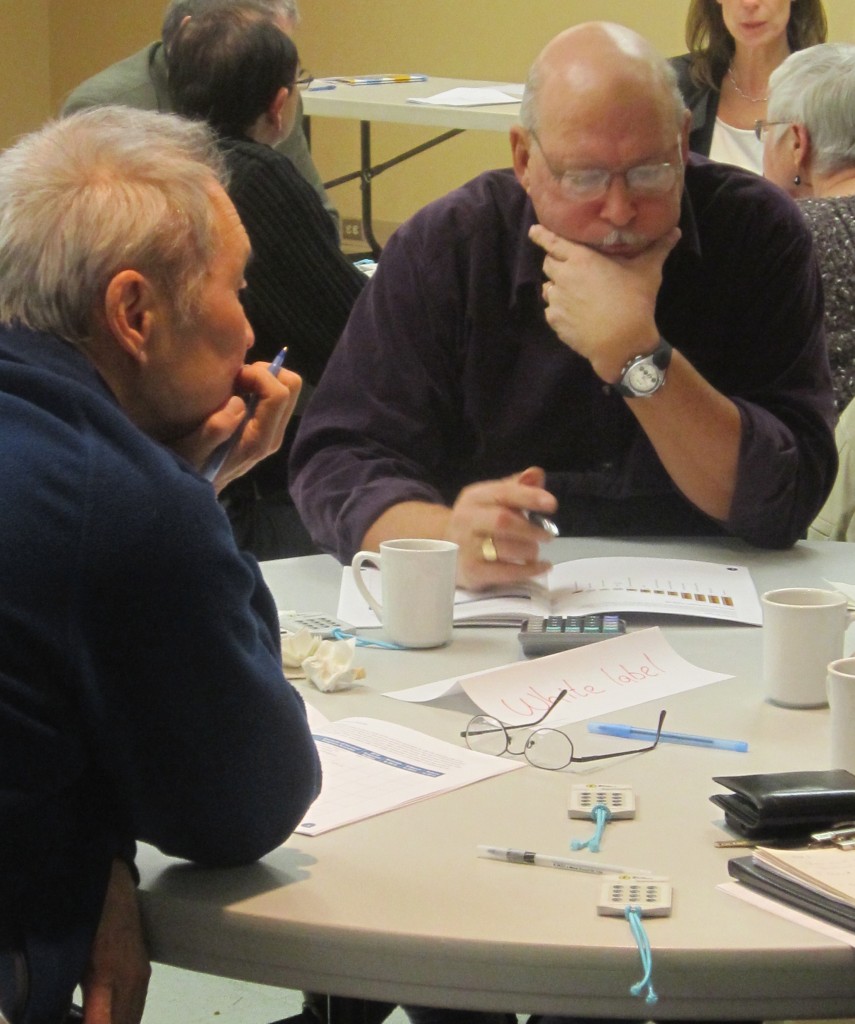 When citizens, be they people involved in non-profit organizations or on civic committees get together – things happen. The Region is sponsoring an event that will pull together all the non-profits to Talk and Connect. 
By Pepper Parr
BURLINGTON, ON January 17, 2012 The Region of Halton is going to host networking series for non-profit sector to create opportunities for conversation, networking and learning to strengthen relationships within the non-profit sector.
The “Let’s Talk…Let’s Connect” series starts Wednesday, February 13, 2013 with a session facilitated by Paul Born, president of Tamarack: An Institute for Community Engagement and author of Community Conversations.
The session takes place from 9 a.m. to 12 p.m. (registration and light breakfast starts at 8:30 a.m.) at the Milton Sports Dome (605 Santa Maria Boulevard, Milton).
“Through many different initiatives, Halton Region regularly partners with the non-profit sector,” said Regional Chair Gary Carr. ”As part of our commitment to working with the sector, we are bringing people together to build strength in the non-profit sector to achieve their organizational goals. Building “capacity” supports the sector to manage services now and in the future.”
That “capacity” words might be working at the Regional level but Burlington is struggling with just what it means as it works it’s way through the creation of an Engagement Charter between the city and its citizens.
Building capacity in the non-profit sector is an action in the Citizen’s Priorities – Halton Region’s Action Plan for 2011 – 2014.
The “Let’s Talk…Let’s Connect” series seeks to connect people and ignite conversations about opportunities for collaboration that will help the sector achieve its goals. Paul Born’s session on February 13 will explore the power of multi-sector conversations for creating social and economic change in Halton. Participants will hear about Halton initiatives that began as conversations and are currently creating change in our community. The session is a great opportunity to share ideas, resources and discuss current trends.
All sectors are invited to participate in this networking series. Government, the non-profit sector, the private sector and funders can all make important contributions to these conversations.
To register for the first session or to learn more about the series please dial 311 or register online.
Sessions two and three for “Let’s Talk…Let’s Connect” will take place in June and October 2013. Topics will be determined based on discussions at the first session.

 By Pepper Parr By Pepper Parr
BURLINGTON, ON January 17, 2013 The folks at Ireland House and the Joseph Brant Museum have finalized the details for the March Break programs they offer
 Ireland House one of the places every child should spend some time at – that and Mt Nemo and they can be known as real Burlingtonians. This year’s camp theme at Ireland House Museum will be “Pioneer Pastimes” learning all about what life was like during the Pioneer days. They will be doing different themed days such as, “Around the Farm”, “In the Kitchen”, “Spring Cleaning”, “Spring has Sprung”, and “Fun and Games”!
I suspect many parents will look askance at that session on Spring cleaning – getting their kids to just put their stuff away is a chore – but it’s worth the effort – I suppose.
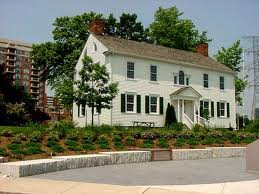 The Brant Museum has always offered solid programs for parents that want to add to what their children get in their classrooms. At Joseph Brant Museum the theme will be “Kreative Kids” learning all different arts and crafts with technique and creativity as the guide! We will be doing different themed days such as, “Paper”, “Textiles”, “Paint”, “Clay”, and “Mixed Media”!
Somewhere in the hallways or perhaps the stairs of the Museum, the Spirit of Joseph Brant will wonder whatever happened to him: doesn’t anyone care anymore?
The Museum people expect to have their brochure online soon, soon, soon.
The programs are designed for children between 5 and 12 years of age. It will cost you $25/child per day or $100/child for the week. Program runs from 9:30am – 3:30 pm each day.
Contact Ireland House Museum at (905) 332-9888 or Joseph Brant Museum at (905) 634-3556 for more detail if that’s what you need. Both Ireland House and the Brant Museum offer solid programs. The small amount of space allows for more interaction between the kids that large venues. And a day at Ireland House is an experience every child in the city should have.

|
|
 October 26th: Award and honouring of Philanthropist of the Year at BCF Masquerade Ball.
October 26th: Award and honouring of Philanthropist of the Year at BCF Masquerade Ball.








































 I also recall him spearheading the Mid-Pen fight right from the time the province (I think Mike Harris himself) made a presentation in the Niagara area, and that’s been his baby ever since.”
I also recall him spearheading the Mid-Pen fight right from the time the province (I think Mike Harris himself) made a presentation in the Niagara area, and that’s been his baby ever since.”









































